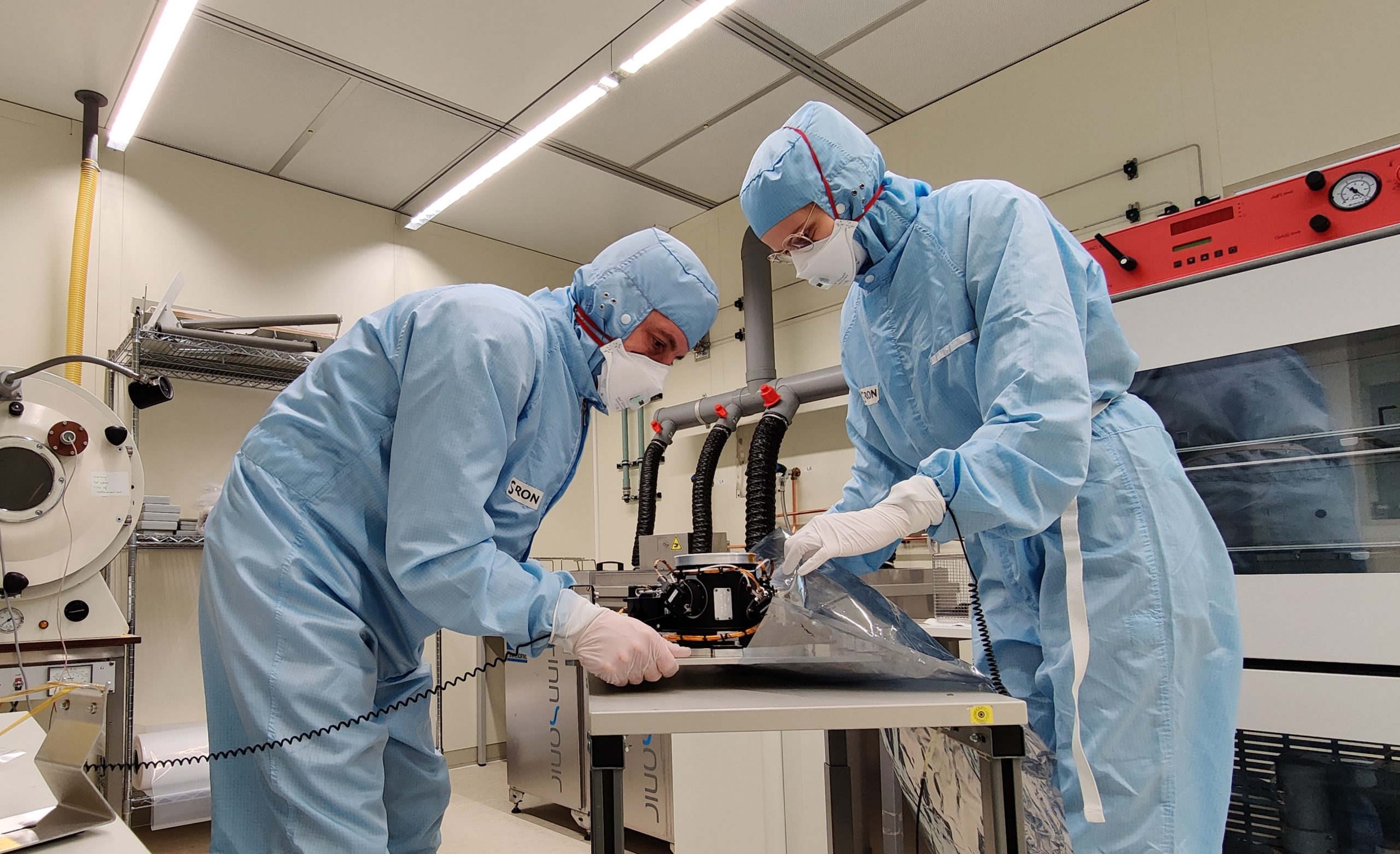SRON stuurt op 9 juni haar bijdrage aan de XRISM-röntgentelescoop naar Japan, waar ruimtevaartorganisatie JAXA alles op de satelliet monteert. SRON heeft de afgelopen jaren gewerkt aan een filterwiel plus kalibratiesysteem. XRISM gaat vanaf 2023 vanuit de ruimte kijken naar onder meer zwarte gaten en supernovae. 
Onze aardatmosfeer houdt röntgenstraling uit het heelal tegen, waar mensen en dieren erg blij mee zijn, omdat het schadelijk kan zijn voor alles dat leeft. Maar astronomen lopen door die beschermende atmosfeer veel informatie mis over bijvoorbeeld zwarte gaten, ijle materie tussen clusters van sterrenstelsels, supernovae en kosmische deeltjes. Gelukkig bieden ruimtetelescopen uitkomst. In 2023 lanceert de Japanse ruimtevaartorganisatie de röntgensatelliet XRISM naar een baan om de Aarde. SRON draagt daar samen met de Universiteit van Genève aan bij met een filterwiel en het bijbehorende kalibratiesysteem.
Op 9 juni stuurt SRON het filterwiel plus een reservekopie op naar Japan, waar alle onderdelen van XRISM worden samengebouwd. Een team van SRON voert daar in september nog een aantal testen uit op het filterwiel, dat volgend jaar in de telescoop wordt gemonteerd. ‘Vanwege Corona heeft alles anderhalf jaar vertraging opgelopen,’ zegt engineer Martin Grim, lid van het team dat naar Japan gaat. ‘We wilden de instrumenttesten daar eigenlijk al in mei 2020 uitvoeren en XRISM zou in 2022 al de ruimte in gaan.’
Het filterwiel draait verschillende filters voor de röntgencamera van XRISM, zodat astronomen de helderheid en golflengte naar wens kunnen wegfilteren. Zo zullen ze het molybdeen grijsfilter gebruiken als een ster of zwart gat teveel röntgenstraling afgeeft en kiezen ze het beryllium- of polyimide-aluminium-filter om bepaalde golflengtes te blokkeren. Een licht-radioactief ijzer-55 filter zit in het filterwiel ter kalibratie van de camera. IJzer-55 zendt continu een bekend röntgenspectrum uit dat dient als referentiepunt. Het kalibratiesysteem bevat bovendien modulerende röntgenbronnen—Modulated X-ray Source (MXS)—die een referentiespectrum verschaffen. Het Nederlandse bedrijf Photonis heeft deze MXS-units aan SRON geleverd.
De Nederlandse bijdrage wordt mogelijk gemaakt door het Netherlands Space Office.
SRON sends filter wheel and calibration system XRISM telescope to Japan
On June 9th, SRON sends its contributions to the XRISM X-ray telescope to Japan, where space agency JAXA will mount it on the satellite. SRON has been working on a filter wheel plus calibration system for the past few years. In 2023, XRISM will be launched into space, where it will observe phenomena such as black holes and supernovae.
The Earth’s atmosphere blocks X-rays from space, much to the relief of people and animals, because it can be harmful to every living species. But because of this protective layer astronomers miss out on a lot of information about for example black holes, thin matter between clusters of galaxies, supernovae and cosmic particles. Fortunately, space telescopes offer a solution. In 2023, the Japanese space agency will launch the X-ray satellite XRISM into orbit. Together with the University of Geneva, SRON contributes to XRISM with a filter wheel and the accessory calibration system.
On June 9th, SRON sends the filter wheel plus a backup copy to Japan, where all XRISM components will be assembled. In September an SRON team will fly over to carry out a number of tests on the filter wheel, which will be mounted in the telescope next year. ‘Everything has been delayed for a year and a half because of Corona,” says engineer Martin Grim, a member of the team that is travelling to Japan. ‘We actually wanted to carry out the instrument tests in Japan in May 2020 and XRISM was initially scheduled for launch in 2022.’
The filter wheel puts several filters in front of XRISM’s X-ray camera, allowing astronomers to filter out the brightness and wavelength as desired. For example, they will use the molybdenum neutral-density filter if a star or black hole emits too much X-ray radiation and they will select the beryllium or polyimide aluminum filter to block certain wavelengths. A low-radioactive iron-55 filter is part of the filter wheel to calibrate the camera. Iron-55 continuously emits a known X-ray spectrum serving as a reference point. The calibration system also includes Modulated X-ray Source (MXS) that provide a reference spectrum. The Dutch company Photonis has supplied these MXS units to SRON.
The Dutch contribution is made possible by the Netherlands Space Office.


